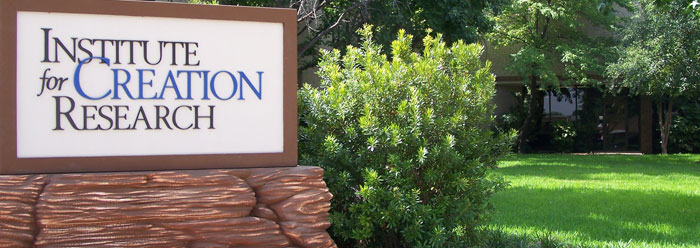Archive of Back to Genesis Articles
'Lucy's' New Foot Bone Is Actually Human
Researchers have announced that a human-looking bone discovered in the Hadar Formation in Ethiopia belongs to Australopithecus afarensis, prompting one major news headline to proclaim, "Ancient Foot Bone...
Life: More Complicated Than We Can Imagine
Organic life is the antithesis of simplicity. Theologians, science historians, philosophers, scientists, and science writers have struggled through the decades to carve out a good definition of this cryptic...
Selected by Nature or Designed to Fill?
Evolutionists like to trumpet the power of natural selection. Often they speak of it accomplishing a major evolutionary advancement, but natural selection doesn’t think or plan or provide. Does this...
Identifying Neandertal Man
Bones were discovered in a cave in Germany's Neander Valley in the middle 1800s. Since then, many more "Neandertal" remains have been uncovered. The story has been told that they wore...
Genesis Flood Insights More Relevant Today than Ever
by Frank Sherwin, M.A., & Brian Thomas, M.S. *
Scientific observations made in the seminal book The Genesis Flood are even more scientifically valid today than when they were first written. Although...
The Creation Worldview and the Scopes Trial
In these pages we often identify evolution as the scientific justification for an anti-Christian mentality. This long war against God was on full display at the famous Scopes Monkey Trail in 1925, where...
Design of Man: No Evolutionary Evidences
Man has either slowly evolved from a primal slime billions of years ago—or he has been created in God’s image. The list of evidences that were supposed to validate man’s evolutionary...
The Stones Cry Out: What Rocks and Fossils Say about th.,.
The Christian Research Institute (CRI) states on its website that “we cannot easily dismiss the fact that an overwhelming majority of authorities in the fields of geology [rocks], paleontology [fossils],...
Creation with the Appearance of Age
Some Christian old-earth advocates hold that if God created fully functioning organisms and physical systems, then He lied to us. They would have looked deceptively mature when they had in fact just appeared....
The Strange Metaphysical World of Evolution
Secular colleges and universities, the media, and the Internet are alive with vitriolic accusations regarding the supposedly unscientific nature of creation science.
But is evolutionary science itself...
Doubts Raised about the 'Goldilocks' Planet
A distant rocky planet was recently discovered orbiting close enough to its red dwarf star that liquid water could exist on its surface. This rare position is called the goldilocks zone (not too hot and...
Reading the Fossil Record
Earlier this year, ICR published a beautifully illustrated book entitled The Fossil Record: Unearthing Nature’s History of Life, co-authored by ICR Senior Science Lecturer Frank Sherwin and myself....
Research That Demonstrates Design and Unearths Flood De.,.
Whether the evidence is large or small, related to the physical sciences or the life sciences, recent discoveries shout “creation.” A look at the submicroscopic world of an enzyme complex,...
Extraordinary Mosasaur Fossil Reveals Original Soft Tissues
Mosasaurs were 40-foot-long marine reptiles with fearsome teeth. Presumed to be extinct, they have been found as fossils on every continent. One unique mosasaur fossil has been housed at the Dinosaur Institute...
Dinosaurs According to Their Creator
Dinosaurs have long been an effective tool for teaching evolutionary dogma. However, since all things were created by the God of the Bible during the creation week not long ago, and He didn’t use...
A Marvelous Symmetry
Often we speak of the creation way of thinking as incorporating and being founded upon three main points: creation week, the Fall into sin and its resulting Curse, and the great Flood of Noah's day. These...
The Created Camel
The one-humped Camelus dromedarius has been called the ship of the desert--and for very good reasons. In a typical day, this 1,200+ pound animal can carry up to 400 pounds a hundred miles across the unforgiving...
Amber Jewelry: A Conversation Piece for Creation Evidence
Amber has been prized for centuries for its beauty. Some specimens have dazzling colors, like a cache recently discovered at Cape York in far northern Australia. Insects, diatoms, a lizard leg, fruits,...
Earth's Magnetic Field
The decay of earth's magnetic field has been one of the strongest evidences for the Bible's recent creation doctrine. This concept, developed originally by Dr. Thomas Barnes in 1971, was updated and revised...
Cells: Sophisticated and God-Designed
God has created man with 100 trillion cells, each of which is a wonder of microminiaturization. The biochemical processes that occur moment by moment are nothing less than astounding. The bewildering complexity...
Tentacular Squid: Rewriting Squid Stories Before the In.,.
During a recent tour of the fossil displays on ICR's campus, a Dutch-speaking group referred to our fossil squid as an inktvis or "ink fish." This led to the discussion of a discovery in 2009,...
The Coconino Sandstone: A Flood or a Desert?
Basic research sponsored by the Institute for Creation Research and funded by its research division, the National Creation Science Foundation, continues to investigate subjects crucial to the creation/evolution...
The Ocean's Salt Clock Shows a Young World
The biblical geologic model of earth history is certainly at odds with traditional uniformitarian assumptions. Creation geologist Dr. Andrew Snelling has published a comprehensive two-volume text on the...
Have Scientists Created a Living Cell?
Craig Venter, who led the first privately funded sequencing of the human genome, has for fifteen years been spearheading a team effort to make "synthetic life." He announced victory on May 20,...
Evaporites and the Flood
Despite the impressive discoveries made by creation scientists, there is still much work remaining to be done. For those considering a career in creation science, either professionally or as a lay advocate,...
Human Language: An All or Nothing Proposition
If humans evolved through a piece-by-piece accretion of parts, then so did their ability to talk. Although talking seems simple, it actually depends on so many perfectly placed characteristics--both material...
Tracking Those Incredible Dinosaurs
Dinosaur footprints are found in numerous locations around the world, on every continent. Typically they are found in strata that evolutionists identify as representing "dinosaur era" time, so...
Did Dinosaurs Die from an Impact?
For decades, various scientists have suggested that an impact from space ended the "age of dinosaurs." But most dinosaur fossil-bearing rock layers better support the biblical history of God's...
Cosmic Energy: Creative or Destructive?
It is intuitively obvious that to get from a Big Bang to intelligent astronomers looking for evidence of the bang through telescopes, the amount of organization in the universe must have increased over...
Understanding Evidence for the Biblical Timescale
by Frank Sherwin, M.A., & Brian Thomas, M.S. *
Time and history clearly differentiate between the biblical and evolutionary worldviews. Vast time is required for broad-scale evolution, and this has...
A Barrier to Evolution
Creationists have long cited the Second Law of Thermodynamics as an anti-evolution argument. The Second Law, or the Law of Increasing Entropy, operates throughout the universe, as far as we can tell, and...
Modern Samaritans
“Ye have nothing to do with us to build an house unto our God; but we ourselves together will build unto the LORD God of Israel.” (Ezra 4:3)
Better understood as historical "stories"...
Evolution's Best Argument Has Become Its Worst Nightmare
How Functional Transposons Refute "Junk DNA" and Human Evolution
Broad-scale evolution holds that a single-cell organism can eventually develop into a human through natural processes. Unique...
Are Green Sea Slugs the Ultimate Created Mosaic?
by Frank Sherwin, M.A., & Brian Thomas, M.S. *
Many creatures appear to be fully integrated mosaics of various features that are shared by otherwise unrelated organisms. For example, hemoglobin is...
An Amazing Anomalous Fossil
Fossils are normally found loosely in the order predicted by the geologic column, which maps the earth's strata. This chart, which can be found in all treatments of the subject, is presented as...
Darwinism's Rubber Ruler
A key element of the scientific method is the ability to test whether a hypothesis is true or false. A theory that can neither be confirmed nor falsified cannot be considered "scientific," and...
Fresh Tissues from Solid Rock
Fresh tissues continue to be found in supposedly millions-of-years-old fossils. These un-replaced, un-mineralized, still-soft tissues come from animals or plants that were preserved by some catastrophic...
Lessons from Mount St. Helens
Readers of Acts & Facts know of ICR's long-standing research interest in Mount St. Helens, the volcano in Washington state that erupted on May 18, 1980. Attendees of many ICR seminars have likewise...
Tapir Testimony to Creation
One odd-looking member of God's creation is the tapir. Its most distinctive feature is a highly flexible proboscis (trunk) that is able to move in all directions. Generally, tapirs stand about three feet...
Why Do Animals Play?
A 19th-century poet spoke of "nature red in tooth and claw,"1 and the sometimes gruesome deaths that became integral to the concept of Darwinian evolution certainly occur. But sometimes...
The Christmas Tsunami of 2004
Just this last September 30, we heard of major earthquakes measuring up to 8.0 on the Richter scale and the resulting tsunami which hit the coast of American Samoa. Many people perished in waves up to...
Beware of Dangerous Definitions
by Brian Thomas, M.S., & Frank Sherwin, M.A.*
According to tradition, in answer to the question of what he most wanted in life, Confucius replied, "I would insist on the exact definition of...
Preadaptation: A Blow to Irreducible Complexity?
Molecular biologist Michael Behe described a system made of several interacting parts, whereby the removal of one part would disrupt the functioning of the whole, as irreducibly complex. Both creation...
Noah's Ark: The Search Goes On
The search for the remains of Noah's Ark began in earnest in the 1950s with several individuals attempting to research the evidence and even search the majestic Mt. Ararat in Turkey. The Institute for...
Bottom-Up Science
Evolutionary philosophy is a bottom-up storytelling project: particles, planets, people. Naturalists (those who say nature is all there is) believe they can invent explanations that are free of miracles,...
A Classic Polystrate Fossil
Years ago, National Geographic published a remarkable photograph of a polystrate fossil, a fossilized tree that extended stratigraphically upward through several layers of rock in Tennessee. Its roots...
Squid Fossils, Ancient DNA, and a Young Earth
The field of biology has provided much support for a recent creation, and physical evidence of very young-looking biological materials from supposedly ancient fossils continues to accrue from around the...
Flying Reptiles: A Lesson in Specialized Function
The great flying dragons of the sky, the pterosaurs, fascinate kids of all ages. With unique body adaptations such as an elongated fourth finger connected to wing membranes, this airborne hunter/scavenger...
Bunnies Bug Darwin
Rabbits are cosmopolitan, herbivorous mammals in the scientific order Lagomorpha, which includes cottontails, pikas ("conies"), and hares. Rabbits burrow and give birth to blind, naked young,...
Dinosaur Soft Tissue Issue is Here to Stay
In recent decades, soft, squishy tissues have been discovered inside fossilized dinosaur bones. They seem so fresh that it appears as though the bodies were buried only a few thousand years ago.
Since...
Laws of Nature and Nature's Lawgiver
What is meant by laws of nature? Presumably it is the business of science to uncover them. Yet few people, and few scientists, ever unpack the term. Many would be surprised to know that there are deep...
The Ice Age: Causes and Consequences
The Ice Age has been a longstanding problem for uniformitarian thinking, with many unsolved mysteries. No mere tweaking of today's climate conditions would cause such a catastrophe. A creationist...
Sharks Remain Sharks
Sharks have always held a fascination (and terror) for the average person. The gaping mouths of these eating machines hold row upon row of serrated, bone-crushing teeth. Sharks are a critical part of...
Huxley Error Led to Cod Calamity
Massive schools of cod fish once dominated regions of the North Atlantic Ocean. The New England coast, according to the December 18, 1497, record of John Cabot, was "swarming with fish which can be...
Atmospheres: A Narrow Zone for Life
One of earth's greatest assets is its life-supporting atmosphere. Only eight other bodies in the solar system are enshrouded in gas to a significant degree.1 Atmospheres can produce dramatic...
Sedimentary Structure Shows a Young Earth
Sedimentary rock, which makes up most of the surface cover of the continents, is by definition deposited by moving fluids. Normally, the sediments contain evidence of their waterborne history in what is...
Surprising Discovery: Sponges and Man Are Not Related!
Evolutionists have insisted that man was not created in God's image, but instead is related to the sponge.1 An equally unflattering pronouncement of human origins was made nine years ago by...
The Ida Fossil: A Clever Campaign for a Lackluster 'Link'
Ida is the stunningly well-preserved fossil that has been hailed as "our connection with the rest of all the mammals."1 A massive publicity campaign, including books, videos, a website, and...
Turtles and Snakes: No Evolutionary Journey
Evolution, the concept that each type of animal arose from some other sort of animal, faces many daunting challenges. Among the more difficult hurdles for evolution to clear is the formation of turtles...
No Seal of Approval for Evolution
The recent discovery of an incomplete northern Canadian fossil is causing waves in certain evolutionary circles.1 Some scientists claim that Puijila darwini is a flipper-free pinniped (a...
Fossilized Biomaterials Must Be Young
Institute for Creation Research scientists documented several clock-like processes in rocks during the groundbreaking Radioisotopes and the Age of the Earth (RATE) project, confirming an age of 6,000...
More Than Star Stuff
Carl Sagan famously said "we are all star stuff" in his 1980s TV series Cosmos. The stuff theme stuck. Lawrence Krauss wrote in New Scientist for February's Darwin Bicentennial that we should...
Darwin's Withering Tree of Life
by Brian Thomas, M.S. and Frank Sherwin, M.A.*
Charles Darwin drew his first "evolutionary tree" in his "B" notebook in 1837, with the words "I think" scrawled above it,...
A Shocking Group of Fish and Eels
Imagine going to a doctor with a flare-up of gout or a migraine. To your utter shock, the physician calmly instructs you to reach into a water tank and hug an electric fish. This is what Roman physician...
The Apobetics of Aesthetics: A Hairy Problem for Evolution
Why do men have beards and women do not? Deep in the brain, the hypothalamus produces surges of gonadotropin-releasing hormone, a small chemical that acts like a key to turn on the manufacture and export...
The Nature of Naturalism
The arrogance of anti-creationists stems largely from their pride in offering natural explanations for the world instead of supernatural explanations. No matter how much evidence can be shown for God's...
No Weaknesses in the Theory of Evolution?
"There are no weaknesses in the theory of evolution." This was the testimony of Eugenie Scott to the Texas State Board of Education in January when the Board was debating new state science curriculum...
Do 'New Species' Demonstrate Darwinism?
Frank Sherwin, M.A., and Brian Thomas, M.S.*
That species undergo change in this grand system called earth is apparent, but those changes do not occur the way Charles Darwin envisioned. Living things...
'Stuff Happens': A Review of Darwin's Influence on Mode.,.
Darwinism has invaded astronomy at many levels. This underscores the contention that Darwinism is not just a theory about the origin of species--it is an all-encompassing worldview.
The most obvious extension...
The Wax That Taxes Darwin
People are able to groom themselves in a way so as to keep external parasites (fleas, ticks) and other irritants at bay. But what about the inaccessible recesses of the ear, with its delicate eardrum?...
Biological Belts
Reinforcing strap structures are found throughout the living world, holding critical biological systems together. Consider human hip structure. The pelvic girdle is comprised of the strongly interconnected...
Surface Features Require Rapid Deposition
Geologists now accept that catastrophic processes are necessary for the deposition of nearly all rock types. Only a short time was needed to form each bed of sediments (which eventually hardened into sedimentary...
Jellyfish Reveal the Recent Hand of the Creator
Jellyfish (Scyphozoa) are truly fascinating creatures with a vague and imprecise evolutionary record. Evolutionary scientists Daphne Fautin and Sandra Romano state, "The four extant cnidarian classes...
More Than Just 'Complex'
A certain amount of confusion has existed over the use of the term "complex." In the past, creation scientists have used it to refer both to unique arrangements, and to unique, specified arrangements....
The Contrasting Religions of Creation and Evolution
The often-asked question "Do you believe in evolution?" expects the answer "Of course!" Don't only ignorant yokels have any doubt? But polls consistently reveal that a great majority...
Complex Plant Systems: Rooted in God's Genius
There are at least a half-million species of plants in the world. Although they do not contain living souls,1 plants nevertheless display incredible design features and complex interactions...
The Gaps in 'The God of the Gaps'
Is a "god of the gaps" at the root of Intelligent Design (ID) and creation science? This informal logical fallacy occurs when a given mystery (or gap) that science has not solved is "explained"...
The Burgess Shale and Complex Life
If evolution is correct, the first life was quite simple, evolving more complexity over time. Yet the Cambrian Explosion of Life has revealed life's complexity from the start, giving evolution a black...
Dinosaur Soft Tissue: Biofilm or Blood Vessels?
Over a decade ago, paleontologist Dr. Mary Schweitzer accidentally discovered soft tissues preserved inside dinosaur bone.1 While examining the bone structure from an incompletely fossilized...
Rescuing Ring Ages
The rapture of seeing Saturn's rings in a telescope for the first time has been enough to inspire many young people to become astronomers. Galileo called them a "most extraordinary marvel." In...
The Mythical Horse Series
Horse evolution prominently appears in textbooks as a supreme example of the evolution of one body style into another. All students remember the "horse series" sketches, tracing the development...
Evolution Continues to Be a Hard Cell
The increasing amount of research at the cellular level has boded ill for the naturalist who insists that life must be interpreted (strained?) through a Darwinian explanatory filter. For instance, recent...
Empiricism: A Glaring Flaw of New Atheism
Atheism is a worldview in which there is no God. Adherents believe that life sprang from natural forces, not an intelligence, and that the cosmos made itself--or at least organized itself out of raw...
The Message in Surprise Effects
"Surprise effect" was a term used by information-theory pioneer Claude Shannon to indicate the presence of information. In a string of symbols, it's not surprising to find randomness or patterns...
The Origin of Flight
Evolution has many steep obstacles to overcome. Many are the stupendous design characteristics and environmental balances that can scarcely be understood by today's scientists, let alone mimicked. Yet...
The Amazing Design of the Human Nose
Besides adding distinction to the human face, the nose is an amazingly complex instrument. The insides of our noses are not just straight hollow tubes, but are shaped specifically to regulate airflow....
Cosmology's Error Bars
It wouldn't make much sense to brag about knowing the diameter of a steering wheel to five decimal places on a car headed the wrong way with an engine about to blow, would it? Neither is it sensible to...
Searching for the Elusive Man from Mars
The Phoenix Mars Lander has successfully arrived and is, as of this writing, examining the surface of the Martian planet. The objective of the Phoenix Lander is two-fold: first, to explore geological...
Tiny Bacteria's Big Challenge to Darwin
Bacteria (prokaryotes) are found everywhere and are a critical foundation of the earth's ecosystem. The prokaryotes are designed to be saprotrophs or "decomposers," breaking down wastes and organic...
Marketing the Navajo Sandstone
A TV ad several decades ago stated with an air of authority that "dogs love cheese." No reports were cited and no canine polls performed, yet marketers hoped its mere repetition would drive the...
The Dinosaur Next Door
Dinosaurs continue to play an important role in science education, for few subjects command students' attention as well as dinosaurs do. Evolutionists shrewdly use them as a tool to teach evolutionary...
Iapetus: Youth in Black and White
On the outskirts of the Saturn entourage flies one of the strangest objects in the solar system. Nothing else is quite like it: a large moon that is jet black on one side, and snowy white on the other....
Evolution's Biggest Hurdles
The theory of evolution has numerous problems, some of which are absolutely enormous and for which no adequate solution has even been proposed. The biggest problem comes right at the beginning with...
Sand Injectites
A combination of "squishy sand" and seismic shaking was responsible for some of southern Utah's most spectacular landforms. Preserved in this rocky landscape are unmistakable indicators that...
Messenger from Mercury
After a 33-year hiatus, we have a message from Mercury. On January 14, NASA's MESSENGER spacecraft (MErcury Surface, Space ENvironment, GEochemistry, and Ranging) sent the first close-up images...
A Providential Wind
The world before the Flood evidently enjoyed substantial equilibrium. Scripture doesn't provide all the details, but we get the impression that earth movements, ocean currents, and atmospheric circulation...
Squid Reflects Creation Evidence
Imagine having skin that can mimic your surroundings, or even make you invisible. The Hawaiian bobtail squid (Euprymna scolopes) in the central Pacific has just such an astounding ability. It is designed...
Christians in Space
Many alive today have witnessed the entire history of space flight. Anyone who looked up to see Sputnik cross the sky on October 4, 1957, remembers the panic that set in across the country. The thought...
The Secrets of Evolution
Life's amazing complexity cannot be denied. We see all around us a seeming universality of perfection. The inner complexity of living creatures is matched by symbiotic relationships between life...
Red Butte: Remnant of the Flood
Sixteen miles from Grand Canyon's south rim, a cone-shaped butte rises like a lone sentinel 1,000 feet above the Coconino Plateau floor. Thousands of tourists rush past on Arizona Highway 64 without...
The Keys to Creation Research
There is no secret method for conducting creation research. It requires the same nose-to-the-grindstone effort that all scientific investigation requires--scholarly study, mathematical rigor, laboratory...
The Regularity of Nature
One generation passeth away, and another generation cometh: but the earth abideth for ever. The sun also ariseth, and the sun goeth down, and hasteth to his place where he arose. The wind goeth toward...
Nebulous Hypotheses
"Glittering generalities"--a phrase describing grand, panoramic scenarios that sweep difficulties under the rug--appropriately describes theories of planetary evolution. They're not as simple...
Sunlight Before the Sun
According to Scripture, God "created the heaven and the earth" on Day One of Creation Week (Genesis 1:1). Initially all was dark, until God said, "Let there be light" (v. 3). Days Two...
Food, Fasting, and Physiology
Fasting is an important, personal matter involving intense spiritual discipline (Daniel 9:3). Clearly, the Lord Jesus fasted (Matthew 9:14-15; 17:21). It is not intended for salvation or to "punish...
The Hualapai and the Flood
It rained for 45 days, and the whole earth was flooded. All the people were destroyed, except for one old man atop Spirit Mountain. Many days passed and a dove brought him instructions from the Creator...
Galloping Glaciers
"By the nearly imperceptible and inexorable work of glaciers, even the mighty mountains are worn down." Such dogma was routinely heard only a few decades ago in all of our university campuses....
Inflating the Evidence
In their quest to disprove design in the universe, scientists have produced evermore speculative models of cosmology. Big Bang cosmology, for example, relies heavily on a process called inflation, an ad...
The Modern Apologist
Christian apologetics--the systematic defense of the faith--has become popular in recent days. We are commanded to know what we believe and why we believe it, and to be able to defend it scripturally,...
Earth: A Special Place
Secularists like to consider earth as just one of many millions of planets, occupying an obscure place in an insignificant galaxy in a sea of nothingness. Conversely, the Bible teaches that earth is very...
Mount Moran: A Witness to the Flood
Mount Moran, the nonconformist of Wyoming's Teton Range, is distinguished by having a blunt top, a prominent black vertical stripe on its upper part, and a tiny visible cap of marine sandstone on the summit....
More Than a Rising Star
On his widely popular Cosmos science program in 1980, Carl Sagan described our paltry existence in pathetic terms: "We live on an insignificant planet of a humdrum star, lost in a galaxy, tucked away...
Varves: Proof for an Old Earth?
Visit any anti-creationist website and you're certain to find a discussion of varves, tiny laminae thought to be annual deposits within sedimentary strata. In some areas millions of these are found...
Megafloods in the English Channel
Sir Charles Lyell, the father of geological gradualism, may have just turned in his grave. A hidden series of gouges on the floor of the English Channel suggests that huge torrents of water once traveled...
Spewing Hot Rocks on Old Ideas
The most volcanically active body in the solar system is a little moon of Jupiter named Io. This moon is pumping out the hottest lavas known, from equator to pole, 24/7. That a small body could be this...
Biblical Myths?
Throughout the Old Testament, God often reminded His children to remember His mighty acts on their behalf. Sometimes visible memorials were set up to facilitate their recall, such as the pile of stones...
Debating Design: The Bacterial Flagellum
Molecular motors--machines made of protein on the submicroscopic scale--are clear evidence of creative design (Romans 1:20). However, scientists who approach the data from an evolutionary perspective are...
Imponderable Substances
Science and pseudoscience: how clear is the distinction? We need to look at history to understand the present. Scientists typically admire magician James Randi, who makes a living out of debunking pseudoscientific...
Lagerstatten!
Lagerstätten is a word creationists should be familiar with. German for "place, of storage [or] resting place" it refers to a sedimentary deposit extraordinarily rich in the diversity or...
Revealing Purpose in 'Junk' DNA
Chromosomes are compact linear entities in the nucleus of the cell. They are composed mainly of DNA, some RNA, and proteins called histones. People have been created with 23 matched pairs (46 total)...
Who's Building Noah's Ark This Time?
Over the years several individuals and various groups have attempted to reconstruct Noah's Ark, either at full or partial scale. Most efforts were halted in the planning stage or in the fund-raising stage,...
Calibrating the Flood?
Rocks exposed in the walls of Grand Canyon testify of the advance of marine waters upon North America during the Flood. How rapid was the advance? What was it like? We may never fully know the answers...
Venus vs. Uniformitarianism
Imagine a world with no oceans where it rains lead. So stifling hot that human visitation is inconceivable, the planet Venus is curiously similar to Earth, yet profoundly different. Venus has a sultry...
What If Evolution Were True?
What if all life evolved from a common ancestor by means of gradual changes as Darwin suggested? What evidence would we expect to find?
Certainly we would expect to find the fossilized remains of the...
The Eyes of Creation
Squares or cubes in the living world are both rare and strange, but there are species of bacteria that are both flat and box-shaped. A deadly Australian species of sea jelly (jellyfish or medusae) called...
Where Are Dinosaur Tracks Found?
Dinosaur tracks and trackways are found in dozens of places worldwide. They are not particularly rare, but still unexpected. Stratigraphically, they are usually found in sediments thought to have been...
The Catch in Creation
When you think of getting your blood pressure taken, you no doubt think of the tight pressure on your arm and the loud ripping noise of the Velcro cuff. Indeed, we've all experienced the benefits...
Geological Provincialism
Geologists tend to be very provincial. Rarely do they stand back and look at "the whole canvas" of the sedimentary rock record. When they do, some remarkable things emerge. For example, consider...
The Light-Distance Problem
Perhaps the question most often asked of Biblical creationists is how light from distant stars could get to the earth in a few thousand years. People usually want a quick one-sentence answer to this question,...
Why Does ICR Study the Mount St. Helen's Eruption?
Ever since the May 18, 1980, eruption of Mount St. Helens, ICR has made it a focus of intense research. From it we have learned a great deal about the origin of rocks and geologic features, and the processes...
The Amazing Jewel Beetle
Recently scientists made a startling discovery in the world of insects. It involved a common beetle called the jewel beetle which is designed with the uncanny ability to detect flames of a forest fire...
Great Turnovers!
The book of Job contains interesting allusions to "overturning" of mountains and of the earth that, on the surface, appear to have relevance to geology. One must say "appear," because...
Supernova Shell Shock
They had told us a particular supernova exploded 10,000 years ago. How then, did the Chinese see it in AD 185? The answer is a case study in scientific inference.
Supernova remnants (SNRs) are shells...
Does the Phrase "Evening and Morning" Help De.,.
The length of the days of Genesis 1 has been much debated. Are the days of Genesis 1 regular solar days, referring to the rotation of the earth on its axis, or could each day be a long, indefinite period...
Follow the Evidence!
Charles Darwin was a good naturalist (biologist) who did work in a variety of areas such as plant hormones and barnacles. But when it came to fossils (physical evidence) documenting macroevolution,...
The Prestige of Historical Geology
As an incoming university student of geology I was required to take a class in Historical Geology. I can recall my professor saying, "back in the Dark Ages . . ." intelligent people actually...
Habitable Zones
When speculating about life in the universe, scientists need to be more realistic than Hollywood. In Star Trek, no matter where the actors land, they can walk around and breathe the air. That may be easier...
Flood Geology and Intelligent Design
Modern earth science owes quite a debt to both Flood geology and intelligent design. According to some, both movements had their start in the twentieth century, but actually these movements played a big...
Scientific Discoveries Continue to Erode Darwinism
The unobserved process of evolution and its bizarre history has been thoroughly entrenched in the minds of millions. For decades there were facets of this theory that one was never to question, but...
How Will the Present Earth Pass Away?
First, let's review some facts of physics. We have discovered that atoms themselves are held together by mysterious forces. These forces keep each atomic nucleus, which contains particles of like electrical...
Space Travel? Shields UP!
In this unique era of human history, manned space flight -- the dream of many a novelist -- has become routine. Star Trek and its spin-offs have taken our imaginations far beyond our giant leap to the...
Does Organic Mean Living?
Often today we hear of the search for "organic" compounds in decidedly "inorganic" places inhospitable to life, such as meteorites or on desolate moons throughout the solar system....
Stalling over Transitional Forms
Skeptics of Mr. Darwin's strange theory have for years used a truly remarkable book by evolutionist Barbara J. Stahl of Saint Anselm College in New Hampshire. It is titled, Vertebrate History: Problems...
Vulgar Notions of a Universal Flood
Scientists of the early sixteenth century faced a dilemma: how did fossils originate? Tradition had held for centuries that the existence of marine shells on hilltops was due to the Genesis Flood. On the...
The Globular Cluster Bomb
Some of the most stunning astronomical objects are globular clusters. These spherically-distributed celestial ornaments can pack a million stars within a tiny angle of space as seen from Earth. For example,...
Was Creation a Miracle?
The Institute for Creation Research's work lies primarily in the area of scientific research and teaching, but at its core it is a Christian organization. Each staff member holds unapologetically to the...
DNA: A Stew-pendous Creation
Often those who prefer non-Darwinian explanations for the origin of the species are accused of being unscientific. One may believe in creation (or intelligent design), evolutionists maintain, but there...
Fossil Political Correctness in the Sixteenth Century
The history of thinking about fossils is a study in worldviews. Conrad Gesner of Zurich (1516-1565) is considered by some the greatest naturalist of his century. His book, On Fossil Objects, in many ways...
Crisis in Crater Count Dating
Dating methods are like human pyramids; they depend ultimately on the support of the bottom layer. Picture an inverted pyramid. If the bottom guy buckles under pressure, the circus act quickly turns into...
How Did Methuselah Die?
One of the favorite characters in the Old Testament is Methuselah, who lived 969 years (Genesis 5:27), longer than anyone else recorded. His father was Enoch, of whom it is said he "walked with...
Those Amazing G Protein Receptors
Using freeze-fracturing and an electron microscope, researchers can indirectly view the plasma membrane of a human cell. What is revealed are large, globular protein molecules that stud the bi-lipid...
The Big Thaw
Ask anybody who has experienced spring "break-up" along the banks of an Alaskan river, and you will quickly learn that large amounts of ice seldom melt placidly. Consider an ice cap several...
There's Only One Universe
Recently a new word has appeared in cosmological literature: multiverse. You won't find it in the dictionary, because it contains a contradiction in terms: multiple universes. By definition, the...
If Apes Evolved into Humans, Why Do We Still Have Apes?
This question often crops up among evolution disbelievers. And while it underscores the truth that most people truly don't believe man came from rats, fish, and single-celled organisms up through...
Walking the Walk
One of many problems in anthropology is how and why man's alleged ancestors decided to walk erect. Evolutionists see "the origin of bipedalism |as| central to understanding hominid evolution."1...
Mudcracks and the Flood
Some people have an intellectual problem with the Flood because of mud cracks. We have all seen cracks that form in a dried (or "desiccated") mud puddle. But did you know mud cracks are also...
Enceladus: A Cold, Youthful Moon
One year ago, one of the most startling discoveries in the history of solar system exploration was announced. One of Saturn's little moons, Enceladus, less wide than Arizona erupted and continues...
Are All Men Created Equal?
It is good to remind ourselves, from time to time, that the foundational charter of America, the Declaration of Independence, is a creationist document. Our founding fathers separated from England by...
Creation and the Bird Flu
We are all familiar with the unpleasant viral condition called influenza, or the flu. Adam and Eve were not created with viral diseases. Such pathogens were the result of the Fall (Genesis 3). Since...
The Fossil Record: Commending the Gnostics
What a man does with the fossil record tells a lot about his worldview. Is it the result of a world-covering deluge? Or did this sorry chronicle of pain, suffering, and death precede humans (and the...
Mature at Birth: Universe Discredits Evolution
Critics of recent creation ridicule the belief that a universe so vast, composed of so many diverse phenomena and processes running at diverse rates, could be fit into a few thousand years. They are...
What Other Doctrines Do You Ignore?
Recently I was talking with an evangelical pastor about his view on creation. Please understand. Creation is not the only Biblical teaching I care about. There's more to Christianity than creation....
Hummingbirds at ICR
The staff at ICR trusts you enjoy the hummingbird picture taken outside a window of our main building. It was noticed months ago that an adult bird was weaving a nest on a palm frond. Being a science...
Out of Ararat?
Paleoanthropologists are not usually known for shying away from discord, debate, or disagreement. Yet for several decades there has been near-unanimity on two fronts: (1) the so-called fact of evolution,...
SETI: Design in Spite of Itself
Researchers involved in the Search for Extraterrestrial Intelligence (SETI) use scientific equipment, collaborate with scientists, attend scientific conferences, publish scientific articles, and generally...
Did Darwin Renounce Evolution on His Deathbed?
The story has circulated for decades. Charles Darwin, after a career of promoting evolution and naturalism, returned to the Christianity of his youth, renouncing on his deathbed the theory of evolution....
Giving an Answer
Everyone holds to a worldview—a philosophical outlook on life—no matter how ill-defined. Whether one is a believer or not, their worldview is formed and molded by their family, culture,...
Arctic Heat Wave
Drill cores from beneath the floor of the Arctic Ocean have revealed a startling find. Fossils from around the 430 meter mark indicate the seabed was once a balmy 23 degrees centigrade (74 degrees Fahrenheit)!...
Titan vs. Billions of Years
The landing of the Huygens probe on Saturn's moon, Titan ranks as one of the most dramatic achievements in space exploration. When Voyager flew by in 1981, Titan looked like a hazy ball at visible...
Where Can We See Young-Earth Evidence?
Rocks and fossils do not come with labels informing us of their age. They must be understood in light of their geologic context, and interpreted within a worldview. Unfortunately, my evolutionary...
Amber: A Window to the Recent Past
Beautiful, golden fossilized amber begins as resin. Exuded as a sticky liquid from bark or wood, it polymerizes into solid amber. It slowly degrades when left in the open and therefore must be rather...
I Love Lucy?
Lucy, to TV audiences of the 1950s and 1960s, was a spunky red-headed actress. To our more educated schoolchildren today, however, "Lucy" means something quite different. She is the celebrated...
Astrobiology: Follow the . . .
"Astrobiology" is a curious science. Like its predecessor "exobiology" it is, as George Gaylord Simpson once quipped, "a science without a subject." We know about astrophysics...
How Old Is Life?
According to evolution, life has been on Earth for billions of years. It is common to claim that life originated some three to four billion years ago. Even though spontaneous generation of life has been...
Blue-t-ful Beetles, Birds, 'n Butterflies
The strikingly iridescent blue seen in some butterfly, beetle, and bird feathers is well-known and enjoyed by scientists and laymen alike. This is due to creatures (and some plants) reflecting or absorbing...
How Coherent Is the Human Evolution Story?
"Australopithocines evolved into Homo erectus around 1.5 million years ago and Homo erectus, in turn, evolved into Homo sapiens around 400,000 years ago." This is presented to school children...
How Big Is God?
Most people know the universe is "vast," but until we visualize it, we shortchange ourselves of some healthy awe. The heavens glorify God, but should also humble us—as should become...
ICR, Prophecy, and the International Gospel
There was an amazing prophecy left by the Lord Jesus Christ as He spoke on the Mount of Olives shortly before His arrest and crucifixion. In response to His disciples' question: "When shall...
Intelligent Design and/or Scientific Creationism
Although we have published a number of articles dealing with the "Intelligent Design" movement, we at ICR continue to get numerous inquiries—both from Christians and from the secular...
Insufficient Design
The modern Intelligent Design movement (ID) has been making substantial progress in recent years, at least in terms of public interest. As one evolutionist recently warned his colleagues:
The...
The Struggles of Michael Ruse
A leading modern evolutionist, Michael Ruse, has recently published a significant book which he has titled, The Evolution-Creation Struggle,1 discussing what might be called the "struggle...
Replenishing the Earth
Although the "gap theory" is not as popular as it used to be, there is still a significant body of Bible expositors who teach that this theory is the best way to deal with the alleged long...
The Tri-Universe
In a previous Back to Genesis article, "The Wonderful Truth of the Trinity" (Acts & Facts, November 2005), the Biblical doctrine of the tri-une God (or Trinity) was briefly expounded in...
The Wonderful Truth of the Trinity
For there are three that bear record in heaven, the Father, the Word, and the Holy Ghost: and these three are one. (1 John 5:7)
The above text is the clearest and most succinct statement of...
Willful Ignorance
We frequently receive requests from readers asking us to reply to anti-creation articles appearing in their local papers. The problem is that such articles appear so frequently all over the country--in...
Irrational Naturalism
One of the most disturbing attitudes of most evolutionists is their insistence on naturalism as the premise for explaining everything from the origin of the cosmos to the origin of the human soul. The...
Evolution--Impossible to Embarrass Its Believers
Creationists have often pointed out that evolution is unscientific because it can never be proved by science to be true. It is not happening at present and without a time machine, they can never be...
The Pursuit of Happiness
"We hold these truths to be self-evident, that all men are created equal, that they are endowed by their Creator with certain unalienable Rights, that among these are Life, Liberty and the pursuit...
Did Jesus Teach Recent Creation?
Most everyone has been taught all through their school years that the earth, life, animals, and man have all been developing from primordial beginnings over billions of years of natural evolution. Many...
ICR - Its Origin and Goal
Some of our constituents have raised questions about ICR's specific mission, so this may be a good time to state it clearly.
Reasons for Founding ICR
Initially, ICR was a division of Christian...
Preserving the Words of God
There is a wonderful promise found in one of David's psalms, as follows:
The words of the Lord are pure words: as silver tried in a furnace of earth, purified seven times. Thou shalt keep them, O Lord,...
The Ultimate Proof of Christianity (The Resurrection of.,.
Today, there are multitudes of religions, cults, and philosophies competing for the hearts and minds of men and women, all over the world. One of these—atheistic communism—seemed, for a...
The Design Revelation
The Design Revolution is the title of a significant new book by William Dembski,1 elaborating on the Intelligent Design (ID) movement which is being welcomed by many evangelicals today as...
Big Bang -- The Bucks Stop There
One main reason why most cosmologists accept the Big Bang theory of the origin of the universe is that it fits so well into the theory of total evolution. It begins with nothing, then matter evolves...
The Improbability of the Incarnation
Many writers have discussed the wonderful prophecies in the Old Testament foretelling the coming of Christ—prophecies about His birth, life, ministry, crucifixion, and resurrection, all of which...
Creation Versus Evolutionism: A Book Report
Since 1970 there have been literally scores of books published against the truth of special creation by evolutionists defending their faith. The latest and one of the most authoritative is by Dr. Eugenie...
The Days Do Matter
In his latest book,1 Dr. Hugh Ross mounts the most vigorous attack yet against literal Biblical creationism and its defenders. The book is replete with references to creationist writings—not...
Doctor Luke
Luke—the author of the third Gospel and the book of Acts—is of special interest for several reasons. He was the only Gentile who wrote any of the books of the Bible. Furthermore, he was...
Immortality
Almost everyone believes in some form of future life (or immortality) because of the extreme inequalities experienced in this life. People just naturally feel that something will be done, somewhere, somehow,...
The Eternal Future of Time, Space, and Matter
Certain "progressive creationists" have been accusing me of believing that the universe never had a beginning—that time, space, and matter have always existed in some form.
That is not...
The Anti-Creationists
I can remember when there were literally no books available that defended the Biblical teaching that the universe had been created in six literal days about six thousand or so years ago. Seventh-Day Adventists...
The City with Foundations
In sharp contrast to the lake of fire, which the Bible says is the future home of the unsaved, the Bible also promises a wonderful city as the future home of those to whom has been imputed the perfect...
The Lake Of Fire
The subject of hell is seldom taught or preached these days, even in fundamentalist churches. Most people believe that hell is only for monsters of wickedness such as Adolph Hitler, not for themselves....
Strange Strings
I was recently reminded of an unusual article1 which appeared many years ago in a leading science journal. The article had the fascinating sub-title, "Prius Dementat," a Latin phrase...
My Dream
With all due apologies to Dr. Martin Luther King, Jr., I also have long had a dream—a dream of a great Christian creationist university and educational center, with teaching and research programs...
On the Vital Ministry of Teaching
The Great Commission, as it is known, is broader than many Christians realize. First of all, it involves Christians being sent into all the world. "As my Father hath sent me," said Jesus to the...
Willingly Ignorant
As creationists repeatedly encounter the refusal of our secular evolutionists even to consider the evidence for special creation and against evolution, we are tempted to apply to them such pejoratives...
The Mathematical Impossibility Of Evolution
ICR began publishing its popular free newsletter Acts & Facts in June 1972, over 31 years ago. The first two issues were 6-page, single-column, fold-over tract-like papers, black-and-white—not...
The Evolving Humanist Manifestos
Despite the growth of many mega churches and the seemingly endless proliferation of parachurch organizations (including numerous new ministries promoting the creationist revival), there also has been significant...
The ICR Graduates
This article was originally published in the September 2003 Acts & Facts magazine. Please note that some of the information contained within the article may have changed.
The ICR Graduate...
Evolutionists and the Moth Myth
Most creationists and most evolutionists are well aware by now of the fall of the evolutionist's icon, the peppered moth, which for many years had adorned the pages of introductory biology textbooks as...
The Bounds of the Dominion Mandate
In a recent article,1 I pointed out that God's primeval dominion mandate is still in effect for all nations. As a reminder, that mandate—originally given to Adam and Eve—is as follows:...
The Uncertain Speed of Light
One of the most frequent questions encountered by those of us who believe in the literal Genesis record of creation is: "How can the universe be young if the stars are old? If a star is, say, a million...
Memories Of ICR Colleagues Now In Heaven
As Memorial Day approaches, I thought it would be a good thing to remember those former ICR workers who have already gone to be with the Lord. It is surprising to realize how many there are. For example,...
The "I Am's" Of Christ
Those "Christians" who think of the Lord Jesus Christ as just a great man who never really claimed to be God need to confront His amazing statement to the scribes and Pharisees there in Jerusalem when...
God's Dominion Mandate and the Nations Today
Despite all the lethal turmoil in the nations of the world today, God is now visiting "the Gentiles, to take out of them a people for His name" (Acts 15:14), thereby creating a new nation, the...
Evolutionary Arrogance
There seems to be something about evolutionism that generates arrogance in many of its spokesmen. The concept is so wide-ranging that it purportedly can explain everything scientifically, from the origin...
Let the Word of God Be True
It has now been almost 50 years since a committee of evangelical geologists rebuked me about a paper I had just presented at the 1953 convention of the American Scientific Affiliation. The paper was entitled,...
What Are They Afraid Of?
On one occasion, the disciples of Jesus were afraid that they were about to die in a violent storm on Lake Galilee, and He rebuked them in these words: "Why are ye so fearful? how is it that ye have...
The Staff of Life
One of the most amazing of the "I am" claims of the Lord Jesus Christ is found in John 6:35:
I am the bread of life: he that cometh to me shall never hunger; and he that believeth...
All Nations Under God
Whether or not they recognize it officially in a pledge of allegiance or some other way, the fact is that all nations are "under God." They were formed by God in the first place, are being evaluated...
The Light of the World
One of the most amazing statements ever made was the assertion of Jesus Christ in the temple in Jerusalem one early morning long ago, speaking to a group of bigoted religionists who were seeking an excuse...
The Dean of Evolution - A Review of Ernst Mayr's Latest Book
With the passing in recent years of the three most revered scientific spokesmen for evolution—Isaac Asimov, Carl Sagan, and now Stephen Jay Gould—Professor Ernst Mayr is left as the unquestioned...
What Astronomers Don't Know
Judging from the number of published books and articles on the subject, there is a lot going on in the field of evolutionary cosmogony as astronomers and cosmological physicists are trying to learn how...
Inquiring Skeptics Want To Know
There is a fascinating bi-monthly periodical called Skeptical Inquirer. This magazine publishes skeptical analyses of many types of pseudo-science and is usually quite informative—dealing as it often...
Evolution versus the People
President Bush's important Elementary and Secondary Education Bill, H.R. 1, was signed into law (P. L. 107-110) on January 8, 2002. It contained the following statement, representing the "sense"...
Things You May Not Know About Evolution
Recently I had the privilege of addressing a gathering of state legislators and other influential political individuals. These gifted men and women are typically highly educated, most having been taught...
Religion and Resurrection
A common fallacy in the secular street-corner philosophy of the world is that all the different world religions are just different ways of reaching God and getting to heaven. The fact is that each religion...
An Open Letter to American Muslims
Dear Friends:
I am writing this letter during the month of Ramadan and I have just finished re-reading the Koran,1 which good Muslims are also instructed to do at this time. I have been trying...
The Mystery of Complexity
The universe is full of an infinite variety of complex systems, from the almost incredible universe itself to the tiniest one-celled creature in the ocean. The most intricately involved of all is the human...
Curiously Wrought
In a recent book, two eminent authors (both evolutionists) give a glowing assessment of the human mind and the brain through which it functions.
The human brain is the most astonishing and mysterious...
Acceptable Words for Such a Time
Basic Truth #1. God is not the author of evil.
The perfect creation was originally "very good," but was soon marred by Lucifer's lie and Adam's rebellion. God has "no pleasure" in...
The Outer Darkness
Astronomers have guessed that there are possibly as many as ten thousand billion trillion stars out there in the observable universe, of which perhaps five thousand can be seen without a telescope. If...
How Not To Defend Evolution
A fascinating new book, Defending Evolution (Boston: Jones and Bartlett, 2001, 261 pp.), is highly recommended by such eminent evolutionists as Ernst Mayr and Stephen J. Gould. Evolutionary spokesperson...
The Microwave of Evolution
Contrary to the statements of most evolutionary writers, few (if any) creationists have ever advocated the idea of absolute fixity of species. The Biblical unit of biological taxonomy, of course, is the...
The Dangers Of Compromise
"Turn not to the right hand nor to the left: remove thy foot from evil" (Proverbs 4:27).
Some today disdain the "old farmer" who has been quoted as saying, "God said it. I believe...
The Cosmic Bubbleland
"For the wisdom of this world is foolishness with God. For it is written, He taketh the wise in their own craftiness" (I Corinthians 3:19).
Astronomer Bob Berman, who writes a regular column...
Why?
"For our light affliction, which is but for a moment, worketh for us a far more exceeding and eternal weight of glory" (II Corinthians 4:17).
"Why—why did this happen to me?"...
Entropy and the Resurrection
"Knowing that Christ being raised from the dead dieth no more;
death hath no more dominion over Him" (Romans 6:9).
The two greatest miracles in all history have been the creation of the world...
The Mystery of Human Language
"He that planted the ear, shall He not hear?
He that formed the eye, shall He not see?" (Psalm 94:9).
The origin of human language—the ability of men and women to communicate with one...
Just How Simple Are Bacteria?
Introduction
For many decades biology students have been taught the unscientific doctrine that prokaryotic cells are "primitive" in spite of their obvious complexity.1...
Cancer and the Curse
"And lest I should be exalted above measure through the abundance of the revelations, there was given to me a thorn in the flesh, the messenger of Satan to buffet me, lest I should be exalted above...
Evolution: Real Science or Nonsense?
"Remember now thy Creator in the days of thy youth, while the evil days come not, nor the years draw nigh, when thou shalt say, I have no pleasure in them" (Ecclesiasties 12:1).
Humans don't...
The Profusion of Living Fossils
"LORD, how manifold are thy works! In wisdom hast thou made them all:
the earth is full of thy riches" (Psalm 104:24).
Evolutionists consider what they call "living fossils"...
Finding An Evolutionist's God
"Thou believest that there is one God; thou doest well: the devils also believe, and tremble"
(James 2:19).
A very potent anti-creationist book has recently been published by Dr. Kenneth R....
How Buildings Grow
"We'll show the evolutionists that complex structures don't grow by chance," said the operator of the giant crane, as his machine lifted the large concrete slab and hoisted it into position...
Evil-ution
Christians who have lived through eight decades or more (as of this writing, I am going on 82) have seen society's standards of morality deteriorate in ways that would have seemed incredible, say, fifty...
Running With Birds and Butterflies
Metropolises are not often thought of as "God's country," but they should be. Man, the apex of God's creation, fills cities. Large cities, like New York and Philadelphia, also have beautiful...
The Vital Importance of Believing in Recent Creation
Those of us who still believe not only that the Bible is the inerrant Word of God, but also that God intended it to be understood by ordinary people (not just by scholarly specialists in science or...
Cosmology on Trial
A recently published book has the provocative title and subtitle: Astronomy on Trial—A Devastating and Complete Repudiation of the Big Bang Fiasco. The author is Roy C. Martin, Jr., and the 245-page...
The Finished Works of God
The Work of Redemption
God, by definition, can never fail in what He undertakes to accomplish. As we approach another season in which most Christians place special emphasis on the death and resurrection...
Scientific Irrationality
Evolutionary scientists like to picture themselves to the public as paragons of rational thought—cool, detached, careful observers and analyzers of the systems and processes of nature. Creationists...
A House Divided
A fascinating new book1 has recently been published in England with the intriguing title, The Darwin Wars. The author, Andrew Brown, though himself an atheistic evolutionist, in 1995 won the...
Strong Delusion
The almost incredible hysteria generated by the nation's evolutionary establishment over the recent Kansas decision is further indication that the creation/evolution issue is essentially a spiritual battle....
The Year 2000 and Bible Prophecy
I realize this is a controversial subject—but aren't they all? And far be it from me to avoid controversy! I can remember when the only people using the word "millennium" were specialists...
Behind the Dark Curtain
The most influential founders and proponents of modern evolutionism were not always objective and unemotional scientists. Most of their modern followers would like for us to think of them as interested...
Creation Evangelism
Creation evangelism is the ministry of using scientific Biblical creationism as a help in winning people to Christ. To the best of my knowledge, the term was first used by Walter Lang almost 35 years ago....
Creation by Inflation and Quantum Fluctuation
Our Bible-believing forefathers were very naïve. They had the simplistic notion that God was omnipotent and truthful. In their unsophisticated view of things they believed that the Bible was God's...
Biblical Uniformitarianism
Christians who believe the Biblical record of recent creation and the worldwide Flood have long recognized the key significance of the Apostle Peter's commentary on these two defining events in world history....
Design Is Not Enough!
There is a strong movement among evangelicals today to emphasize "intelligent design" as the argument of choice against naturalism and Darwinian evolution. The movement is also called "mere...
Fish That Talk
Darwinists teach that humans are the most highly evolved animals, with fish in our distant ancestry. John G. Maisey...
The Bible and Jesus Christ
All evangelical Christians believe in Jesus Christ as the unique Son of God, and have accepted Him as their Savior and Lord. They seek to obey His great commission: "Go ye therefore, and teach all...
The Deity of the Risen Christ
We often hear this criticism from evangelicals: "You creationists are causing controversy and division among Christians; you should just be preaching Christ and the gospel, not creation!"
But...
What They Say
Evolutionary scientists sometimes say the most fascinating things. When confronting creationists, they always present a unified front, insisting that total evolution is a certain fact of science, proved...
All Spaced Out
Those scientists (astronomers, astrophysicists, cosmologists) whose professional activities focus on outer space seem to live in a strange wonderland of relativistic mathematics and quantum theory, which...
The Stardust Trail
Big Bang cosmologists believe that our human bodies are essentially "stardust," composed of elements generated long ago in exploding stars which disbursed their dust into space. The trail began...
Creation, Christmas, and the Qur'an
Recent contacts of ICR scientists (especially Drs. John Morris, Duane Gish, and Ken Cumming) with Muslim business and professional men in Turkey have generated significant interest in key points of agreement...
The Tree Of Life
The wonderful Tree of Life, discussed in the two "book ends" of the Bible, Genesis and Revelation, is one of the most fascinating (yet enigmatic) subjects in all the inspired word of God. It...
Grazing the Mailing Lists
Probably most of our readers experience the same problem that I do every day. Each day's mail—both at home and at the office—brings a goodly number of urgently worded solicitations for donations....
Why Christians Should Believe in a Global Flood
The Biblical Flood in the days of Noah has become a great divide between two watersheds of belief. On the one hand there are those who say it is either a purely mythological event or else possibly a...
The Postmodern Agnostic
The term "agnostic" is generally believed to have been coined by Thomas Huxley, "Darwin's bulldog." It is supposedly a less dogmatic position than that of atheism, holding that one...
Bigotry in Science
Scientists like to be accepted as clear-thinking, objective scholars who observe and measure natural processes as they actually occur, documenting and confirming experimentally the physical phenomena of...
The Literal Week of Creation
There are many Christians today who insist that they believe the Bible, but seem unable to believe its very first chapter. The Biblical record says that God created the universe and everything in it in...
The Fall, the Curse, and Evolution
One of the hardest things to understand is how anyone who claims to believe in a God of love can also believe in the geological ages, with their supposed record of billions of years of suffering and death...
God's Library
I have always loved books and libraries. As a child, I spent much time in the Houston Public Library and read many books. As an engineering student (later also as a teacher), spending my evenings at the...
Inspired Guesses, Creative Imagination, and Science
The first point to make about Darwin's theory is that it is no longer a theory, but a fact" (Julian Huxley, Issues in Evolution, p. 41).
Although the evolutionary community would have the public...
Evolutionary Paranoia
Most of the leaders in the bureaucracies that control the scientific and educational establishments are becoming increasingly paranoid concerning the creation model. Perhaps they are feeling a bit guilty...
God's Only Begotten Son
One of my favorite Christmas Scripture verses is I John 4:9. "In this was manifested the love of God toward us, because that God sent His only begotten Son into the world, that we might live through...
Why the Gap Theory Won't Work
What is the Gap Theory?
One of the popular devices for trying to accommodate the evolutionary ages of the geologists and astronomers in the creation record of the Bible has been the "gap theory"—also...
Bring the Books
Among the very last words written by the great Apostle Paul were these: "The cloak that I left at Troas with Carpus, when thou comest, bring with thee, and the books, but especially the parchments"...
"Human Evolution" An Update
In a 1979 college textbook on evolution by Ayala and Valentine, the authors assert: "To be sure, both butterflies and humans have descended from a remote common ancestor, most likely a small worm-like...
Radiometric Dating and the Bible: A Historical Review
The dating of rocks by the radioactive decay of certain minerals is undoubtedly the main argument today for the dogma of an old earth.
But the Bible clearly teaches a recent creation of both the heavens...
The Creationism of America's Founding Fathers
As the nation celebrates American liberty on the Fourth of July each year, it would be appropriate for all Americans (including those who have come here from other nations in search of that same freedom)...
Can Order Come Out of Chaos?
There is a new science abroad in the land-the science of chaos! It has spawned a new vocabulary—"fractals," "bifurcation," "the butterfly effect," "strange attractors,"...
The Coming Big Bang
For over thirty years, the Big Bang Theory has been the reigning paradigm of evolutionary cosmology. It assumes a naturalistic evolution of the space/time cosmos from nothing into an infinitesimal universe...
Old-Earth Creationism
Many evangelical leaders today, unfortunately, have capitulated to the evolutionary time-scale of modern unbelieving geologists and astronomers. They feel that they must somehow reinterpret the Genesis...
Prophecies of the Resurrection
Just as creation is the most certain truth of real science, so the bodily resurrection of Jesus Christ is the most certain fact of genuine history. And as creation by God required His substitutionary...
Creation on Campus
The following article describes the successful efforts to form an Origins Study group on a major university campus. It was written by Josh Cuozzo, son of Dr. Jack Cuozzo who speaks at ICR Seminars from...
Defending the Faith
In the next-to-last book of the Bible, the apostle Jude exhorts us to "earnestly contend for the faith which was once delivered to the saints" (Jude 3). His warning refers primarily to professing...
Evolution and the Pope
According to the Vatican Information Service in a news release on October 23, Pope John Paul II was reported as saying that evolution is "more than just a theory." This seems to mean, despite...
Reason or Rhetoric
A reader in Colorado recently sent to us a newspaper article written by Dr. Joseph D. McInerney in reaction to the recent discussions in the Jefferson County schools about an evolutionist video to which...
Back to the Mythical Genesis
"Back to Genesis, the epic first book of the Bible that takes readers from stories of the creation of the world through the first centuries of human history." 1
An advertisement of...
The World and The Word (Psalm 19)
The 19th psalm is one of the most magnificent writings in the Bible and indeed in all literature. As in all the psalms, the structure is poetic as it extols the majesty of creation in its first six verses,...
Of Making Many Books
With the worldwide proliferation of television sets and personal computers, along with the proposed global superhighway of information, one wonders if books may soon become as outdated as slide rules.
I...
Sweet Land of Liberty
A favorite patriotic song of yesteryear, "My Country, 'Tis of Thee," is not sung much anymore, especially in our public schools. I assume this is because the last verse is a prayer, directed...
Should Creationists Abandon The King James Version?
In this day when many Christians have started using one of the modern English translations of the Bible, abandoning the King James Version, it may be well to review a few of the reasons why many creationists...
Communicating the Truth (XI: ICR, For Such a Time as This)
These past many months we have rehearsed ICR's past and explained its present make-up and operations. We now look forward to the future. Last month we looked at future research, discovering new...
The Remarkable Word Patterns in the Book of Genesis
A truly amazing, as well as enigmatic, phenomenon of hidden word pairings in the Masoretic text of the Book of Genesis has recently been reported by a team of Israeli scientists. The discovery was first...
Discovering Truth with Scripture
These past 9 issues of Acts & Facts have rehearsed ICR's beginning and history, and described its present ministry. For twenty-five years ICR has championed the Biblical truth of creation, primarily...
« Prev Page Displaying 301 - 600 (of 684 articles) Next Page »




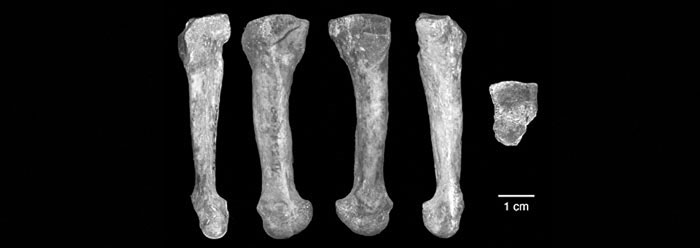













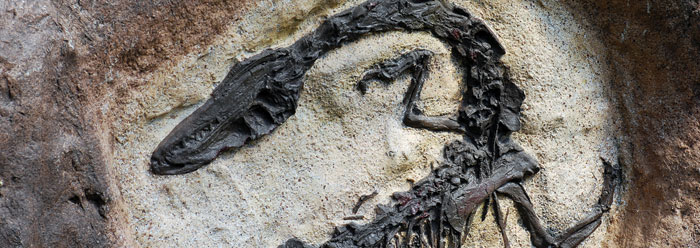





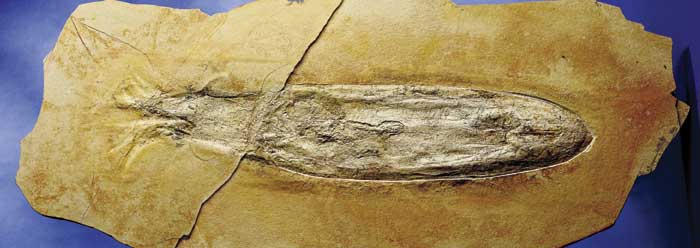






























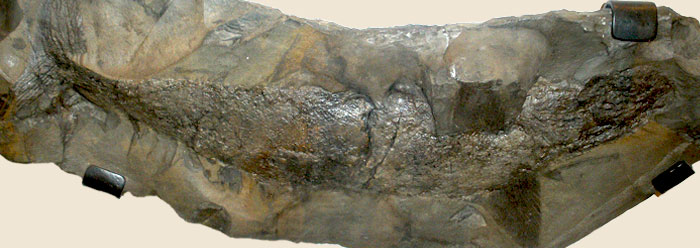





































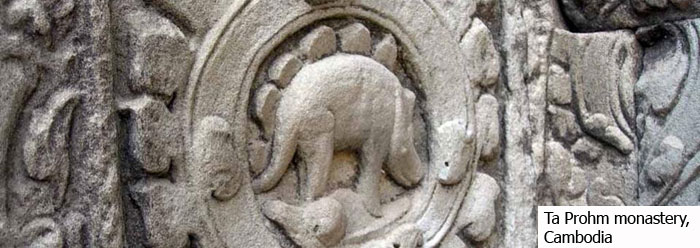















.jpg)





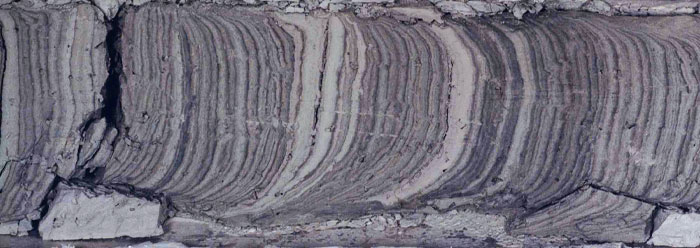





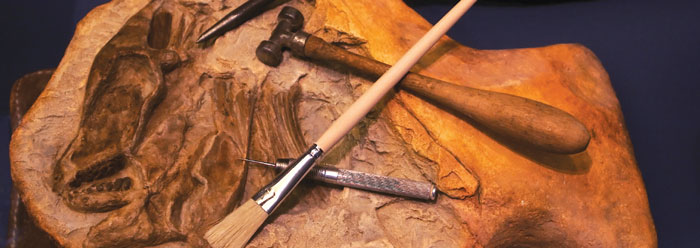












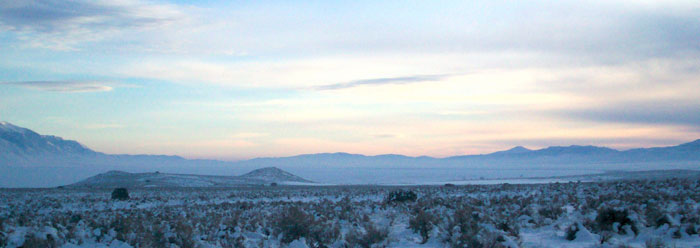















.jpg)




































.jpg)




